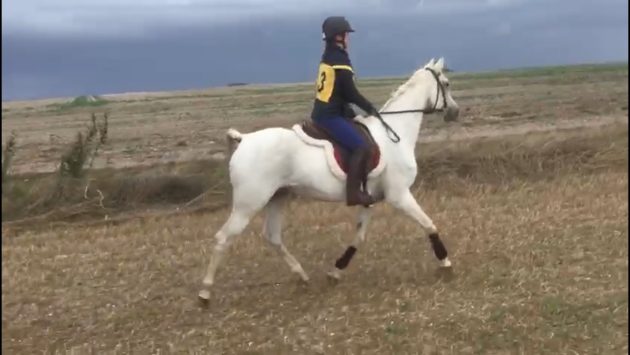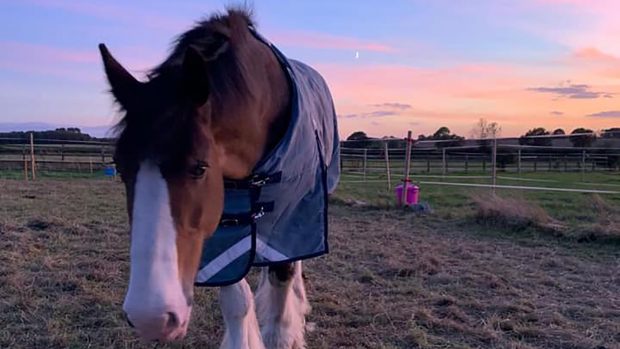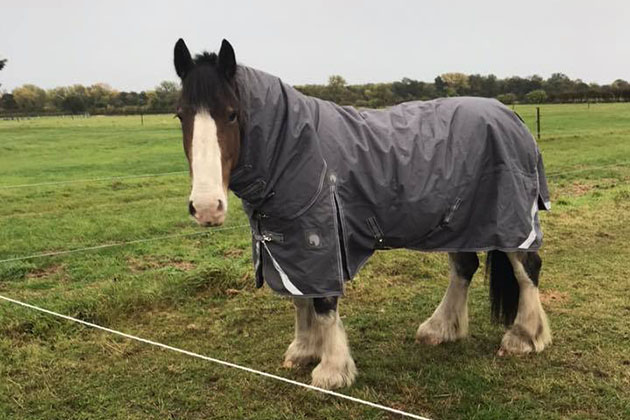As I write this on Friday 12 October, I’m en-route now to Johannesburg by way of Dubai, and will fly on to Durban first thing tomorrow to be transferred to the start camp. On Sunday and Monday we undergo pre-race training and come sun rise on the morning of Tuesday 16 October, I will be racing the Wild Coast.
This post features a couple of videos I have made giving the more die-hard enthusiasts and fellow adventures/competitors an insight into what I am carrying with me on the race,and why. But this is a fairly specialised field, and so in the interests of not boring the Horse & Hound readers too much, I would like to describe some of the key features of this event, and what I have done to prepare for various aspects. Kit is important, as evidenced by the eight (no, honestly, eight) Amazon deliveries that arrived yesterday, but the very point of an adventure, particularly one where your teammates are horses, is the need to improvise and adapt as conditions dictate. I already know I will be going without lots of exceptionally useful items. If I had every scenario covered off adequately, I’d be carrying 20kg, not five. And no horse should carry 20kg of my clutter for 100km. The rules state I can carry 5kg only, in a cantle bag and a back pack.
So, here is some of the salient information provided to the riders by the organisers, and here is what I have done with it.
1. 360km total distance, broken into legs varying from 11km to 44km, with vet checks and holds at the end of every leg. Changes of horse after 104km, and then 199km. Each rider draws a team of three horses and decides which order to deploy them in.
So, it’s far, really far. Well I have done 100km plus in a day a fair few times. I know what a weary horse is like to ride and will do everything I can to stave off that feeling and preserve its energy, and my own. I have done a few other all day or multi-day endurance type events off horses, too. I suffer pretty well. I’m a terrible athlete, but I do suffer well. Probably in this race that’s the more important factor.
The vet checks resemble vet gates in endurance, and I have plenty of experience of those already. Good. There is no crew to speak of though, I will be in charge of the horse’s welfare, feeding and hydration. I manage them in the holds, overnight, and out on the race proper. That’s fine too, I can diagnose and treat many things (including “this one is just lazy”), know what to stitch up and treat remotely and know when to call in emergency back up. I know a few of the tricks of the endurance game for helping the horse’s pulse come down to the required 64bpm (we will have 20 minutes to pass the vet). But more to the point, I know how to manage the horse over an extended period so that the pressure is off in that 20 minutes.

The glorious Fred, star of Jeremy Naylor’s stable and my hot date of a weekday morning these last few weeks
We have two days in which to get to know our team of three horses. That’s also great. My recent experiences riding out with Jeremy Naylor have refreshed an already extensive body of experience of just hopping on new horses and getting a tune out of them. Listening rather than dictating how they are going to go, at least to start with. I won’t be there to educate these horses, just to see their relative strengths and weaknesses, and with the information we get about the course, decide which one to station where. That said, the inner dressage rider never dies, and mine will go straight, and forwards, as much for their own comfort as for mine.
2. The course — mapped with GPS. Broadly speaking, 20km easy beach riding on day one quickly gives way to multiple technical swims, epic scenery, highly remote and slow going. All being well, I’ll change onto second horse some time on day two, for the shortest, but apparently the toughest leg. No doubt the 11km stage will not be a cake walk, if it’s that short. Rocky passes and scary descents, cliffs to dangle off, horses to persuade down forest tracks carved by cattle two feet shorter than them… the last leg, should I get that that far, will be the longest, but relatively open country. The beach riding Barry the organiser put in the brochure… sand has its own hazards though, and a couple of swims will depend on the tides, hence the fifth riding day as contingency.

Riding out Lady Cardinal
So, there’s a lot of info in there. Firstly, can I use a GPS. Well, yes. I do a lot of the mapping for the Mongol Derby and actually help the riders manage their own device when they turn up at pre race training having barely switched it on. I navigate in rural Mongolia and Siberia with a GPS. I haven’t done it against the clock for a decade, but I feel confident about navigation and gadgeteering. There will be a few “direct routes vs easier but further options” available on the GPS. Again, what is hypothetically available to the riders is one thing, but if they cannot access that information because they cannot load and unload various tracks on their GPS, they might as well be riding blind. That, hopefully, won’t apply to me. And I hope to be fit enough to choose the steep route if the horse is brave, and the long but shallow route if he’s not. I don’t intend to be the limiting factor in the route discussion.

Road testing icebreaker Merino wool, sone bungees, some ratchets and cargo nets, plus how to pack your camp kit in five minutes flat. An unlikely dress rehearsal, our European moto tour…
Secondly, the horses for courses aspect. This really appeals to me, as I am sure it will to all my competitors. What a beautiful opportunity, to ride and swim these three horses during training, look at the maps and topography, consider how I myself will deteriorate over the distance, and therefore, which horse to pick for which challenge. What a brilliant test of horsemanship. Happily as someone who likes horses of all shapes, sizes and demeanours, and thanks to my family and friends have had access to an amazing array of them at very short notice, I think I’ll have an advantage here.
Continued below…

*NEW* Race the Wild Coast blog: once more into the breeches
Meet our new blogger as she prepares for an adventure of a lifetime
The physicality aspect. No getting away from that one. We are advised to get off and run a lot of the downhills, and to get under various low hanging branches and down tight spaces. Sections will be a hike. Sections will be a swim. Not just a wade but a proper swim, fully kitted and clothed. It’s going to be exhausting, and uncomfortable. On this aspect, I have tried to strike a balance between kit I am comfortable riding in, and have tested, and kit I think will reform but couldn’t possibly try out beforehand. For the exhaustion and discomfort, I know myself. I’ll whinge, internally, wear fear as anger until it subsides and I am able to just get over myself and carry on. Having a horse under me or at my side will help enormously with that.

My medical/vet kit
So. Below I lay out some of my chosen kit and equipment. If you want the full run down watch the videos too, but hopefully you can now see why this event is more than just a kit test.

My kit
It’s Friday today, and I disembarked from the ferry on Wednesday afternoon after 2400 amazing miles on the Ducati. On Thursday at dawn I was back in the saddle at Jeremy’s and schooled two, one I knew and one I didn’t. Perfect training. I cannot thank him enough for lending me horse power and for putting me up on a series of wonderful thoroughbreds (this is Fred, finest of them all, and I am about eighth in the queue to acquire him upon retirement from his racing career. If Fred were on a plane to Durban I would be a very, very happy Katy).

Ready to go!
I must also thank Maggie Patinson and Shelley Bates, who also got me out riding again as soon as I divulged my Wild Coast plans to them. Time in the saddle of Maggie’s top mare Monita, now 25-years-old (pictured top), is time you wish would slow down so you can savour it for longer. Here’s us eating up Lambourn together on a memorable Sunday.
By the afternoon all that remained to do was pack, weigh, re-pack and re-weigh. My dream kit was 6.5kg so it took a few edits, but here it is…
Video one: outfit head to toe. Featuring a dog and a bit with my hand down my pants
Video two: what’s in my race pack and why
Wish me luck — the next time you hear from me, I will have hopefully completed this incredible challenge.
Katy
For all the latest news analysis, competition reports, interviews, features and much more, don’t miss Horse & Hound magazine, on sale every Thursday.



